Capcom will release Dragon’s Dogma 2 on March 22 for the PC (Steam), PS5 and Xbox Series X|S. Its predecessor, Dragon’s Dogma, launched back in 2012 for the PS3/Xbox 360 and, at the time, was a rare example of a Japanese fantasy action RPG with open-world exploration. The game boasted a high degree of freedom, coupled with a unique Pawn system and dynamic gameplay. Now, more than 10 years later, the memorable IP is coming back with a sequel.
To find out about how Dragon’s Dogma 2 came to be and what it has in store for players, we talked to the title’s producer Yoshiaki Hirabayashi and director Hideaki Itsuno, who have been involved in the IP since the very beginning.
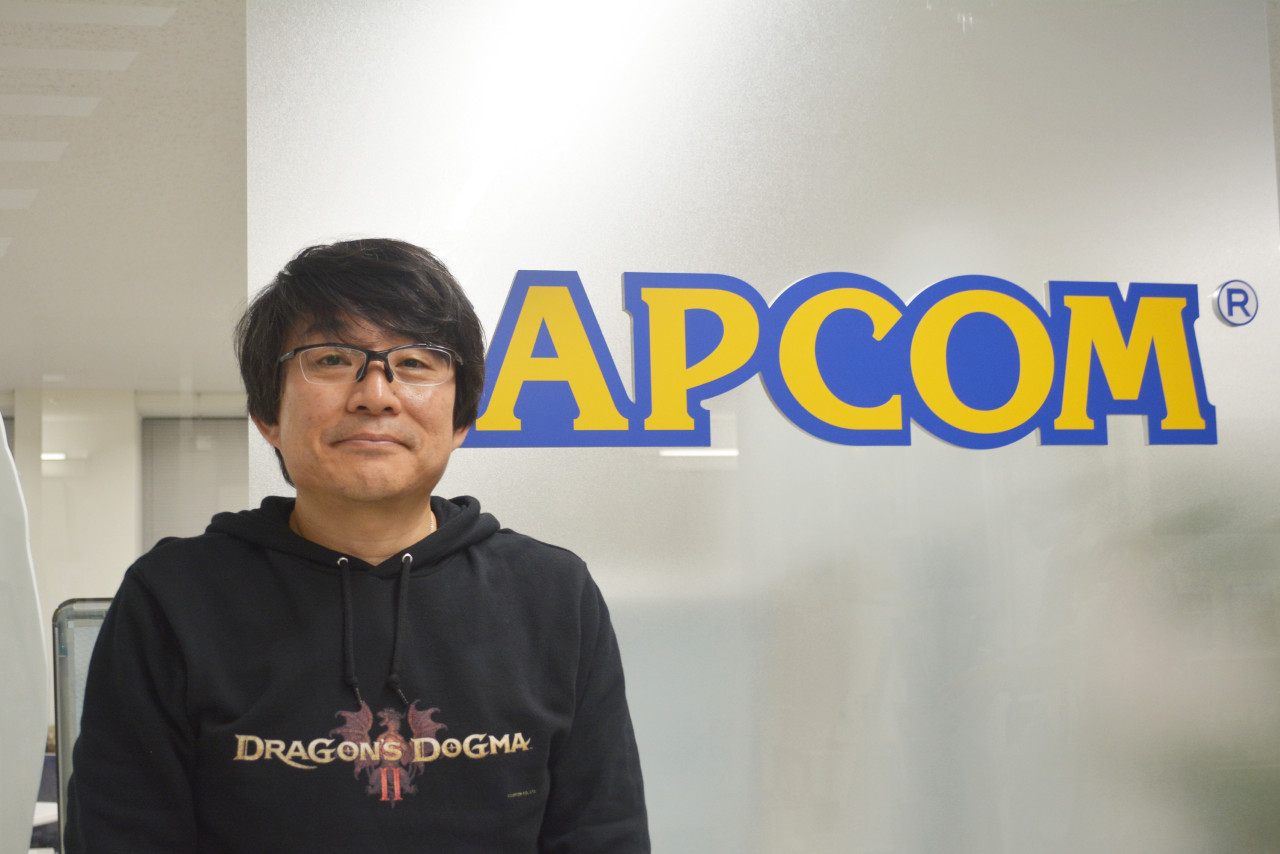
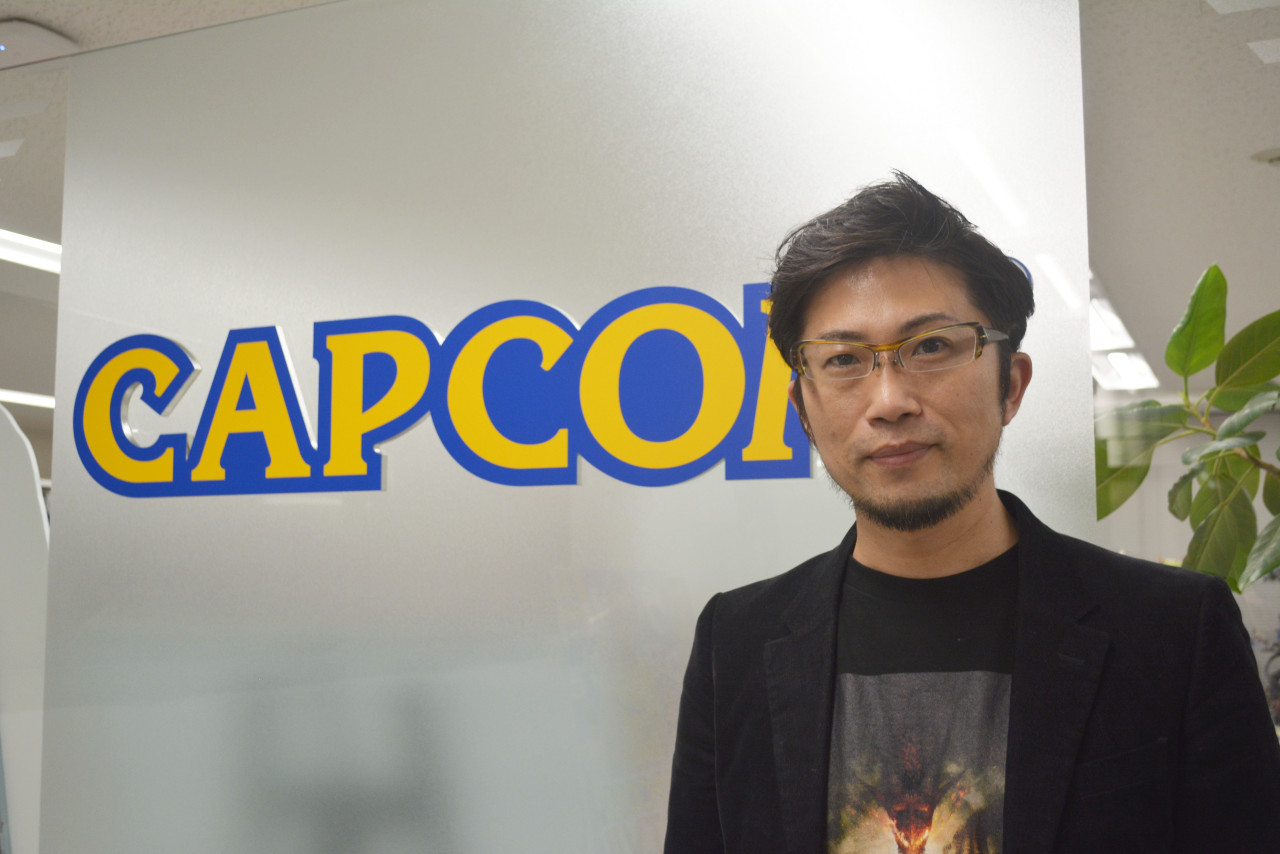
──How did you decide to make Dragon’s Dogma 2?
Hirabayashi:
It has been more than 10 years since Dragon’s Dogma and Dragon’s Dogma: Dark Arisen were released. In the meantime, we’d been working on Japan-exclusive titles such as Dragon’s Dogma Online and the mobile game Dragon’s Dogma Quest, but we had been considering a single player sequel to the series for a long time.
Capcom was aware that Itsuno was essential to the Dragon’s Dogma IP, and that a sequel would involve a large-scale development team. Itsuno finished the Devil May Cry 5 project a little over five years ago, and this is when the environment for the development (of Dragon’s Dogma 2) was ready. It was not a sudden decision, but something that had been in the works for a long time.
──(To Itsuno) Did you also have the idea of Dragon’s Dogma 2 on your mind for a while?
Itsuno:
Actually, before I started working on Devil May Cry 5, I was given the choice of either making Dragon’s Dogma 2 or DMC5 first, and I decided to work on DMC5. So basically, the idea for Dragon’s Dogma 2 had been on my mind the whole time. As for our development policy, we decided to stick to the basic concepts of the original Dragon’s Dogma.
There had originally been so much we wanted to do in Dragon’s Dogma. However, due to restraints related to time, manpower, technology and hardware, we had to give up on many of our ideas. Also, after the release, we received a lot of feedback from users, such as, “having only one country feels bare.” With Dragon’s Dogma 2, our goal was to try and incorporate these ideas and feedback as much as possible.
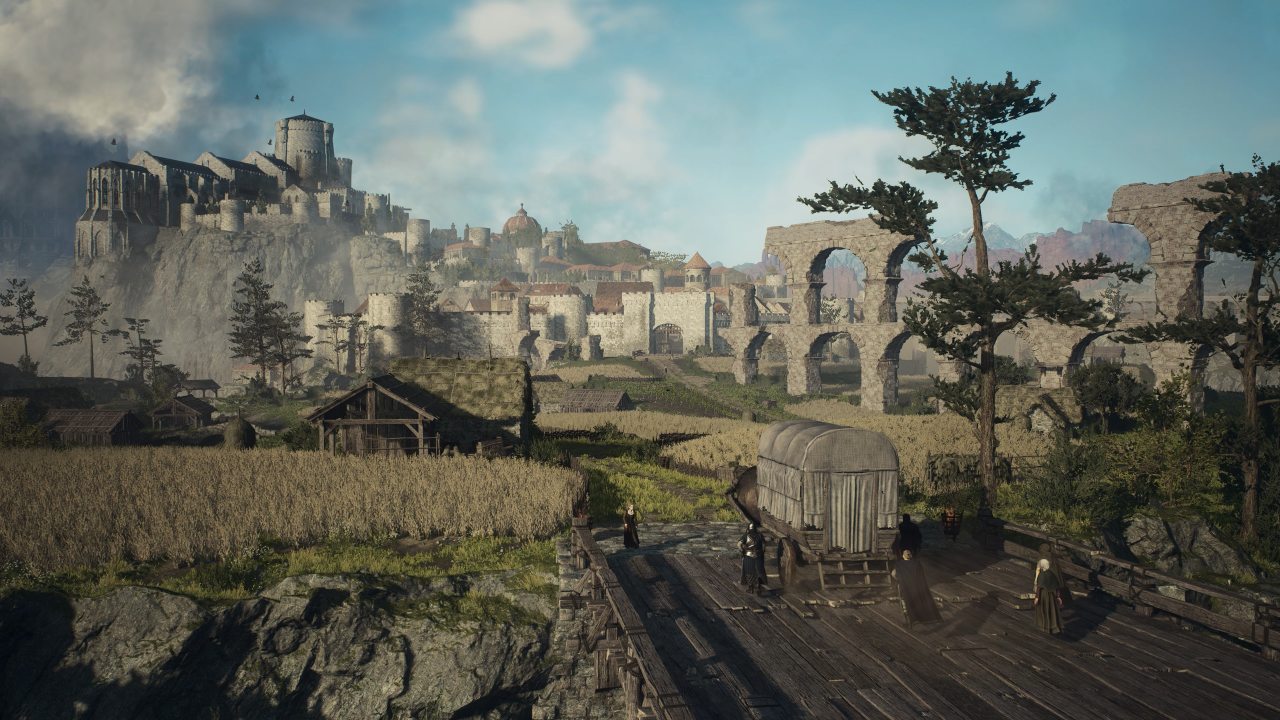
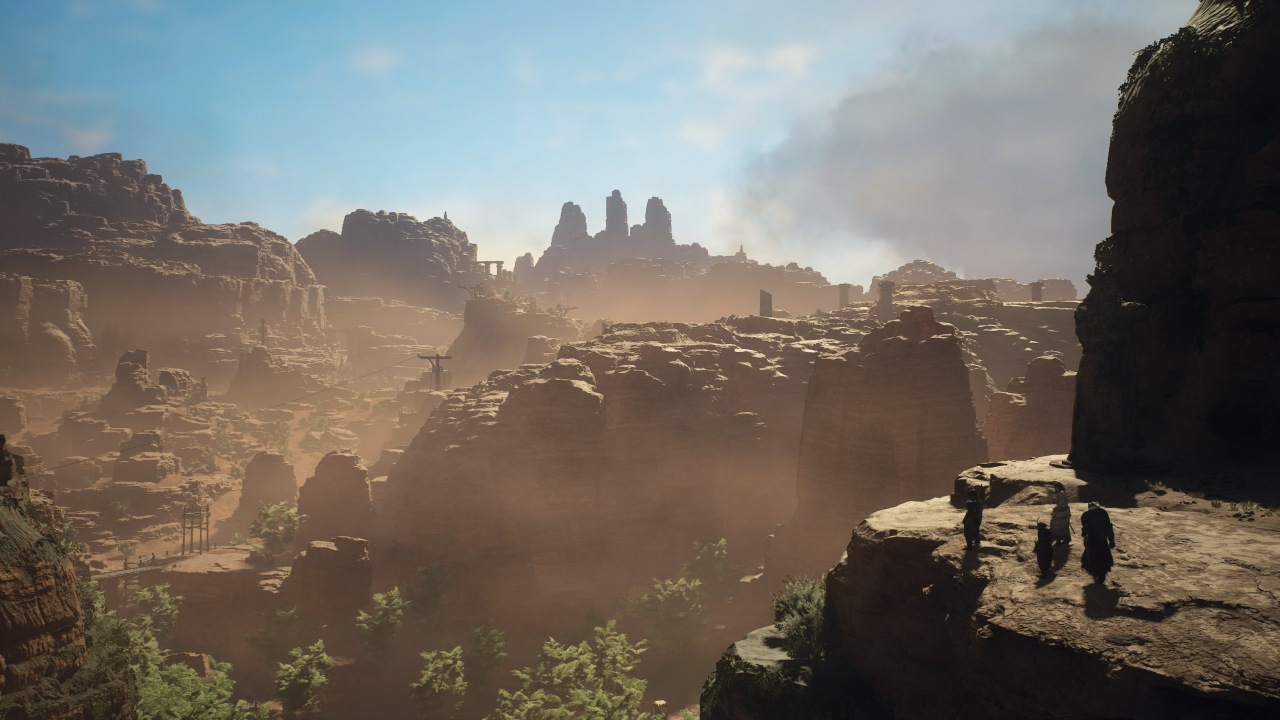
──What are some specific features you weren’t able to include in Dragon’s Dogma that we can look forward to in the sequel?
For starters, there were many technological shortcomings at the time in terms of creating a proper open world. For example, when entering a densely populated area such as a castle or dungeon, there had to be a brief loading time to switch from the data for the distant view to the detailed data for the interior, which prevented a seamless playing experience. However, in Dragon’s Dogma 2, all dungeons, towns and house interiors will be seamlessly connected.
Also related to memory is the number of NPCs, which is dramatically higher in the sequel. In Dragon’s Dogma, if we had two large boss monsters appear, we would struggle to get the “small fry” monsters in there too. But in the sequel, even having three large bosses at the same time is no problem, so the player can experience stumbling upon the next boss while running away from the previous one. Running away will now come with a risk, adding a dose of realism to the chase.
In Dragon’s Dogma 2, we were able to introduce the two countries Vermund and Battahl, as well as “Dragonsplague,” the contagious disease that infects Pawns. These were also ideas that we were not able to implement in the previous title. AI behaviors, which had been simplified due to the limitations of the PS3 at the time, are simulated more realistically in the sequel.
Another big feature of Dragon’s Dogma 2 is the introduction of a new race – the Beastren. This too had been an idea we had for the first game – but as we struggled to include a large number of fur-covered characters, we were not able to implement it. The sequel will feature the Beastren and their country Battahl, and players will be able to choose the Battahl race for their Arisen (playable character).
──Will the race chosen for the Arisen affect the course of the story?
Itsuno:
The main course of the story will not be affected, but attitudes towards Beastren differ greatly depending on country, so we have made this difference visible in some aspects. Also, certain strategies for progressing in the game may develop differently depending on whether the Arisen is human or Beastren.
──In Dragon’s Dogma, each vocation can use multiple weapons, whereas in the sequel, it seems to be more or less one weapon each, with the vocations becoming more specialized. What were the ideas behind these adjustments?
Itsuno:
In an action game, the more versatile a vocation is, the less powerful it can be. After all, if one vocation were great at everything, it would become the only choice, compromising the balance of the whole game. Therefore, in order to make each ability stand out, we narrowed down the range of actions for each vocation and buffed them. This makes each vocation more interesting and emotionally engaging to use. To accomplish this, we categorized vocations into melee, long-range and support types and made them as strong as possible in their respective fields of specialty, so that they can offer different kinds of playing experiences.
The new Warfarer vocation will be able to use all weapons, but it will be more vulnerable. We balanced out this vocation by making it difficult to draw out its strength without developing other vocations and statuses.
──The new “Trickster” vocation’s style of fighting makes me think of support characters in online games, but are you considering any multiplayer options for Dragon’s Dogma 2?
Itsuno:
We have not been considering any form of multiplayer for Dragon’s Dogma 2. I think online games have their good sides; just as offline games have their own. But the concept of the original game was to incorporate fun gameplay elements not found in conventional offline games while removing all the “hassles” of online games. This is one of the basic original ideas of the first game that I don’t plan on straying from.
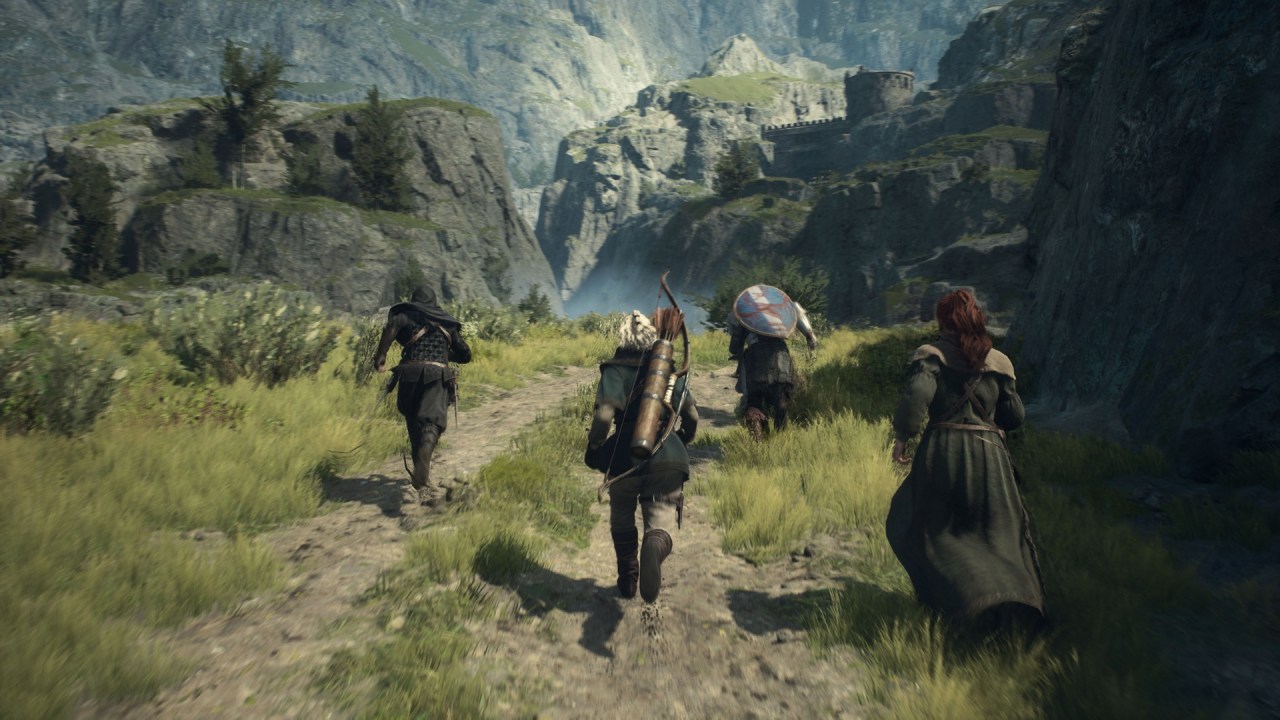
──In Dragon’s Dogma, you could develop “Affinity” with NPCs, but will there also be something like this in the sequel?
Itsuno:
There will be a lot of it, and it will be even more pronounced. It’s almost the entire reason why we made the game open world. There will be many events that occur/don’t occur depending on Affinity, and relationships between NPCs will also be important. For example, if you raise your Affinity with the parent of a child, your Affinity with the child will increase as well. On the other hand, NPCs can also fall out with each other. We’ve “powered-up” the Affinity feature a lot…and sneaked in a lot of things (laughs).
──Will things like NPCs dying during town raid events happen?
Itsuno:
Our basic premise since the start of the series has been “creating a fantasy world simulator,” so NPCs dying is a normal occurrence. If there’s an NPC you care for in a town, you will need to protect them as you fight, or hold them and run.
Hirabayashi:
However, there are Wakestones (resurrection items), so even if an NPC dies, all is not lost. It’s just that for a simulator, it’s unnatural to have beings that are completely invincible. When there is death, we take it seriously, and it affects how we act. In a world without death, I think people would be irresponsible and apathetic to their own actions.
Death makes us feel a sense of danger. Dragon’s Dogma 2 contains many aspects that leverage this tense relationship with death. For example, you come across a cliff – you could make a shortcut by leaping down, but you cannot be sure if you will die or not. You can choose to take the risk or to avoid it. In this way, the height of the cliff becomes meaningful to the player.
Itsuno:
I believe that death is an irreversible event, so there’s a heavy emphasis on whether or not a player dies in the action part of the game. This is because the notion that “if you die, you can just start over” compromises the feeling of adventure. A feeling of adventure equals the feeling that you might die – this is a sentiment shared by the whole development team. The possibility of death is what makes you scared and what makes you careful. The effort not to die is what creates the process of trial and error.
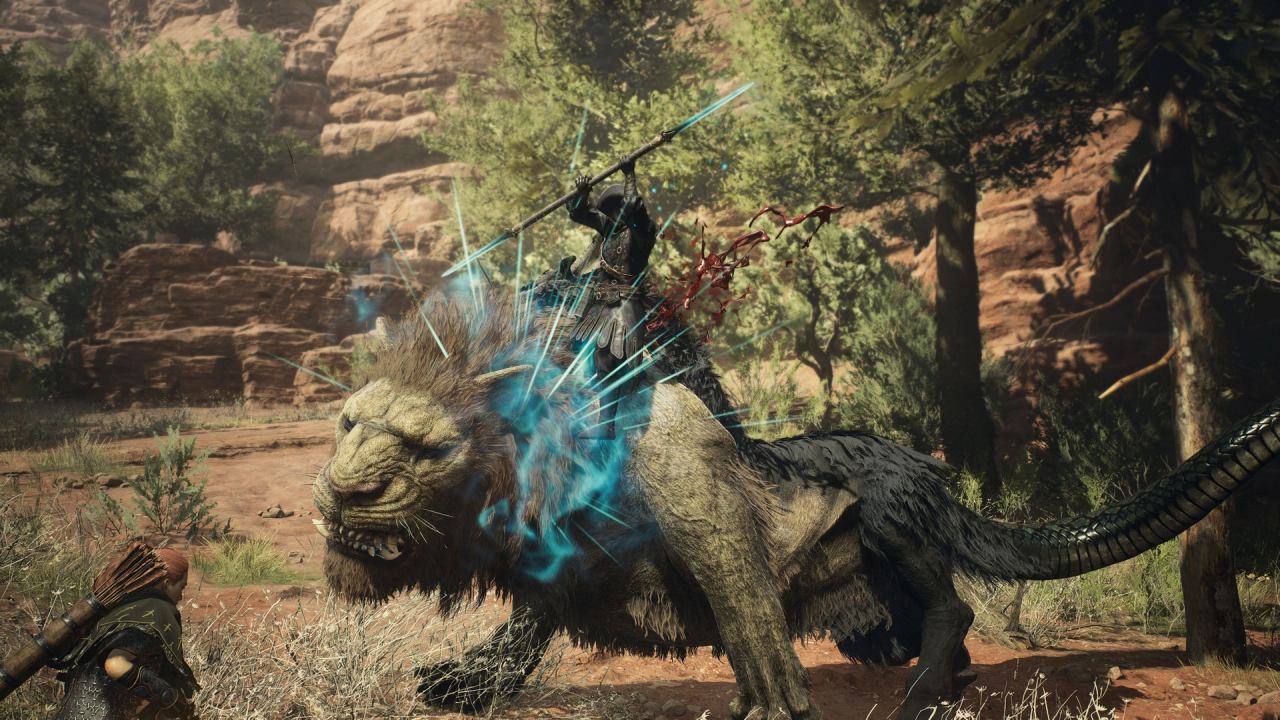
──Compared to the previous title, how much has the map in Dragon’s Dogma 2 been expanded? How many more towns can we expect?
Itsuno:
We always say that the map in Dragon’s Dogma 2 is four times the size of the previous one, but we haven’t measured it exactly, and the development team believes it to be much larger. The number of towns has increased dramatically too. There are two large countries, with various settlements within them. However, rather than the size of the map, we placed a much stronger emphasis on its density. We’ve gone through numerous adjustments of the map, making sure to eliminate tedious time spent moving through the field.
Hirabayashi:
We think of Dragon’s Dogma 2 as an “experience-driven” game, as opposed to a story-driven game. The field is not simply vast with no purpose, but is designed to provide enjoyable experiences with each minute as you traverse it. We are confident in the volume (of the map) in terms of its density, rather than size.
──What was your policy in terms of the map’s density?
Itsuno:
This was another concept from the original game that we decided to “power up” in the sequel. We have packed Dragon’s Dogma 2 full of features that we were unable to include in the previous game, and we have put to use a lot of the knowledge we’ve cultivated in the meantime. For example, in open-world games, players often want a long-distance means of transportation such as horses. However, I think the reason why users want horses is not so much because they want to experience horse riding, but because they feel bored on the road if they’re not riding. Therefore, our goal was to prepare a path so enjoyable that players would not feel the need for a horse. We have built in a lot of “fun” into the map so that players will not get bored along the way, and our development policy was to make it so that it would actually be a shame to ride a horse (laughs).
Hirabayashi:
We want to give the players a worthwhile and fun experience for the time they’re investing in the game. However, we also don’t intend to impose anything on them, as we believe that players have various ways of interacting with the game. Thus, while being mindful of balance, we have prepared a fast-travel system that uses Ferrystones.
Itsuno:
They cannot be used on a whim, but if you have money and wish to, you can choose to buy them. During the first run, the Ferrystones are super rare, but as you come by more money, you can start using them quite freely.
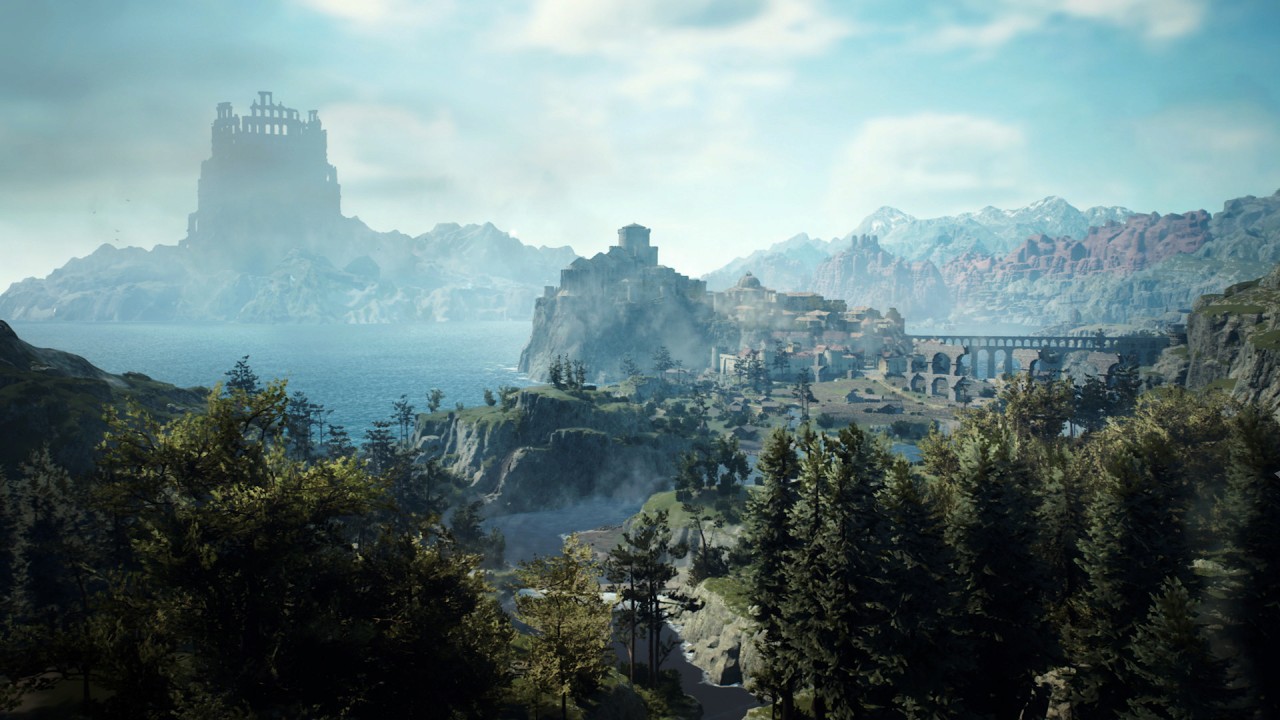
──What made you decide to stick to the “restricted fast-travel system” as opposed to an unrestricted one?
Hirabayashi:
I think that in games that employ fast travel without restrictions, the emphasis is on the content in between travelling, but in Dragon’s Dogma 2, the emphasis is also on the experience of travel itself. For example, nighttime is very dangerous due to limited visibility, and the fear of the night gives distances a meaning. If you are going to spend the night traveling to a distant destination, you need to make sure to bring enough oil for your lanterns before you leave your base. You need to think about whether you should bring camping gear and make necessary preparations. Our goal was to create a rhythm of tension and relaxation.
Itsuno:
Daring to travel on foot makes it possible to experience new developments or discover alternate routes you hadn’t noticed before. Another way to travel between locations is to use ox carts, but there is a risk of being attacked. For example, in the middle of the night, your ox cart is destroyed by an enemy attack, your Pawns are killed, and you are all alone, running away from the Undead. Then, you happen to see the smoke from a camp in the distance and the faint light of lanterns – you feel the fear and tension dissipate and a true sense of relief come over you. I think such experiences are the joy of this game, and just the act of travelling can create drama.
You can feel a sense of adventure, and I think that each user will be able to experience something different even on the same road. I think these are the kinds of experiences people will want to tell others about, which is perfect in this day and age of social media. I welcome people to make their streaming debuts and share their adventures with others (laughs).
Hirabayashi:
Pawns can also be lent and borrowed via the server, so you can even watch a live streamer travel with your own Pawn.
Itsuno:
It would be fun to see my Pawns being used by a famous streamer. The Pawn system itself has been around for some time, but I think it can be used in more modern ways now too.
──I got the impression that the game requires quite a bit of trial-and-error and thoughtful strategy. What was your policy in terms of game balance?
Itsuno:
In principle, we believe that the users’ playing experience will be greater if they can think for themselves and do what they want to do, rather than just following instructions. Therefore, we set a slightly higher hurdle for users, but this is not to say that we simply raised the difficulty level. We were mindful of maintaining a balance that allows users to progress using either knowledge, time, or technique. For this purpose, we have prepared many possible solutions. The game may not be 100% fun for all users, but for those who are determined to enjoy it, it can deliver a 120% or 150% experience.
Hirabayashi:
Some players will get through with overwhelming technique, while others may opt to form a party with knowledgeable/high-level Pawns, or take the time to collect items and level up. When you get stuck in the game, it could be useful to think of “technique, knowledge and time” and focus on working on one of the three.
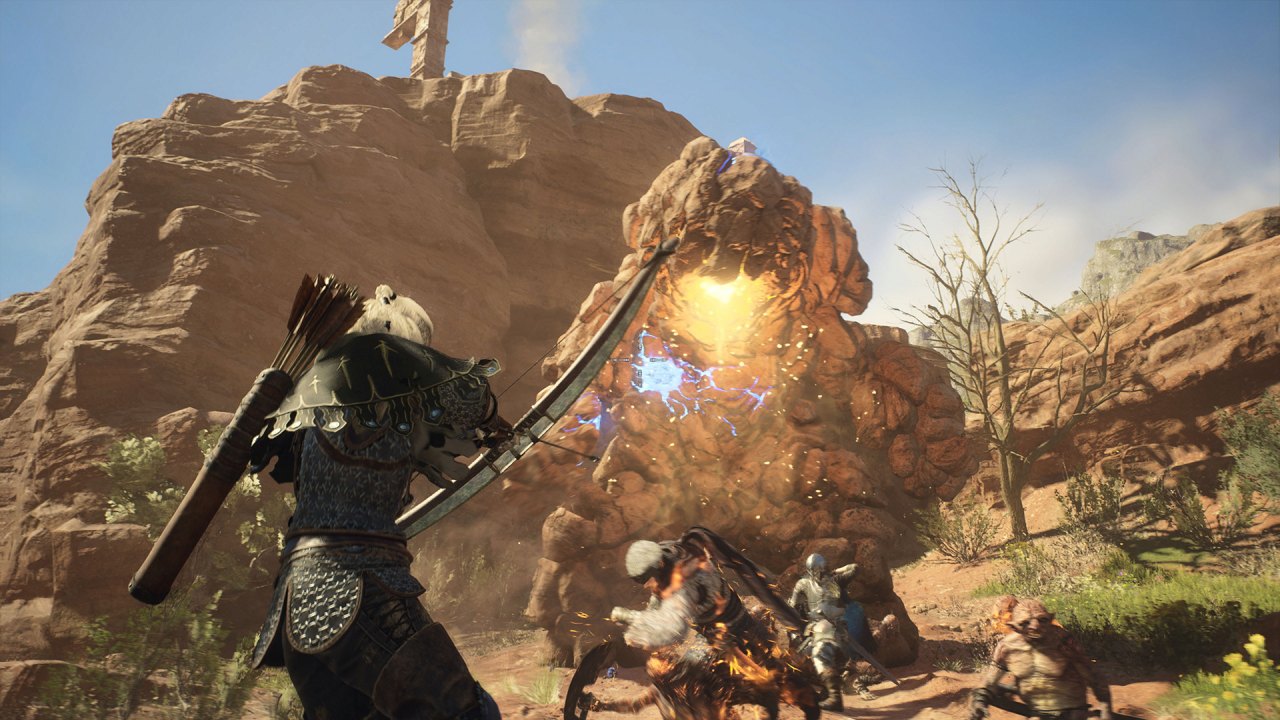
──What is something that can only be expressed and experienced in Dragon’s Dogma?
Hirabayashi:
It’s the feeling of adventure. When I was a child, I would go into the mountains and play pretend games, which felt like a real adventure. Now, as an adult, the feeling I get while holding a controller and playing this game is very close to what I felt back then. In Dragon’s Dogma 2, I was able to feel a sense of adventure even greater than that of the previous title, so it really stuck with me personally.
Itsuno:
Putting it into words simplifies things a bit, but for me it’s a “pseudo-experience.” I want to create a game that makes you dream of what you experienced in-game as if it were a real experience. To accomplish this, I am particular about many details, such as the camera’s angle of view – which is set to mimic the angle of view of the human eye. Of course, using a wider angle would allow players to see more of their surroundings at once, but I think that the angle we implemented in Dragon’s Dogma 2 makes it “easy to dream of.”
Also, games allow you to experience fear in a way not possible in the real world. Getting attacked by a monster at night and running away in tatters – these kinds of thrilling experiences are another selling point of Dragon’s Dogma 2. While such events may be common in fantasy worlds, this game puts emphasis on the enjoyment of entering and becoming involved in another world , so I encourage players to play and experience it for themselves. I hope that those who wish to play the ultimate role-playing game will enjoy Dragon’s Dogma 2 immensely.
──Thank you for your time!
Dragon’s Dogma 2 is scheduled to release on March 22 for the PC (Steam), PS5 and Xbox Series X|S.
©CAPCOM CO., LTD. ALL RIGHTS RESERVED.
Writer, editor: Jun Nanba
Interviewer, editor, photographer: Hideaki Fujiwara
Translated by. Amber V (original interview in Japanese can be found on Automaton Japan, our sister site).



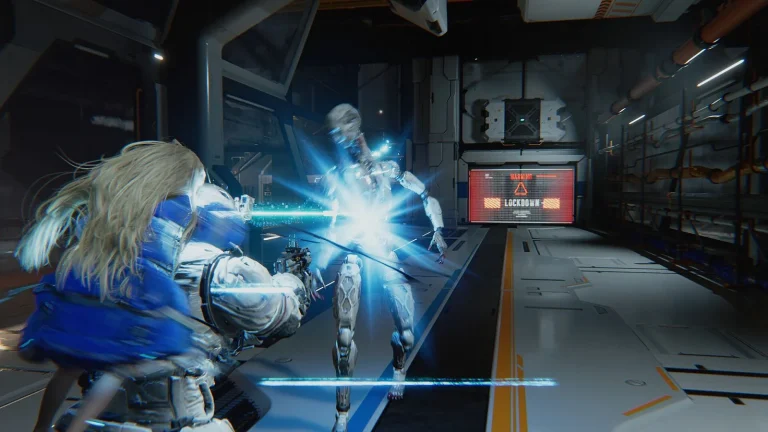
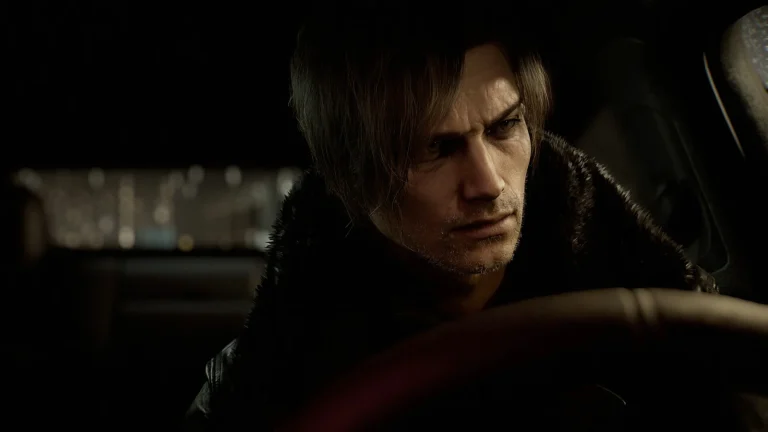
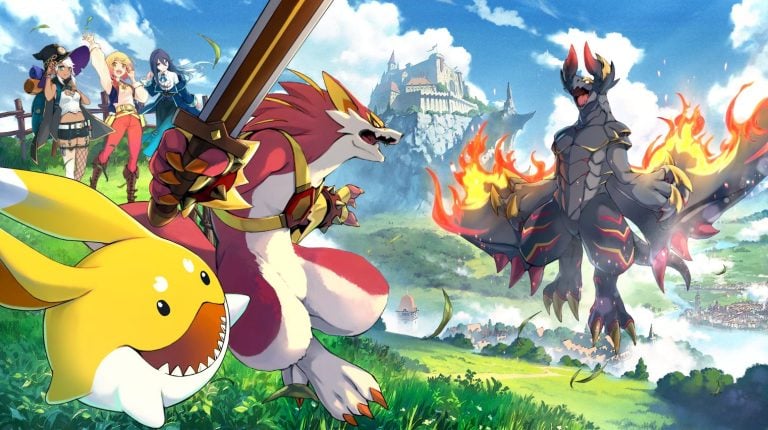
Absolutely a wonderful interview. The Pawn system and the interactivity with them in DD1 made me truly understand how far behind a lot of companies are on game design. They always feel lifelike and are apart of the world than static and not helpful at all. With DD2 I definitely believe we will see the game design fully realized and change the landscape in Video Games going forward with a focus on Game Design than just Graphics.
Lovely interview and great website. Didn’t know about this but will be visiting from now on.
Really eager to play Dragon’s Dogma 2.